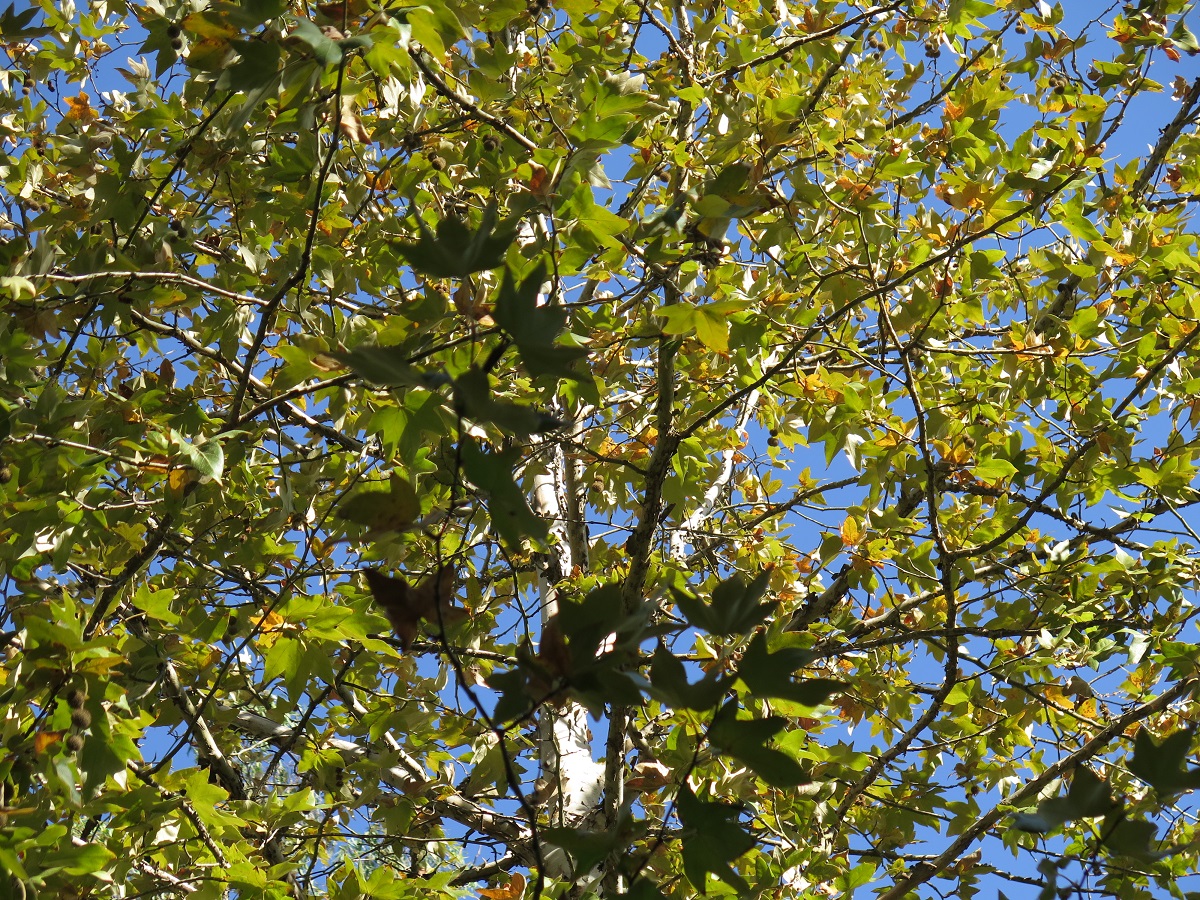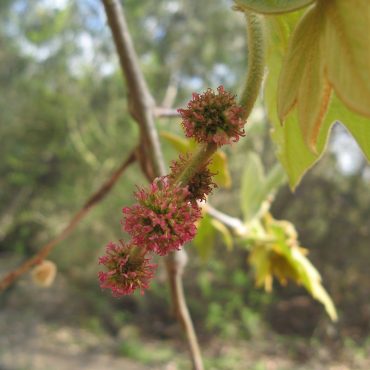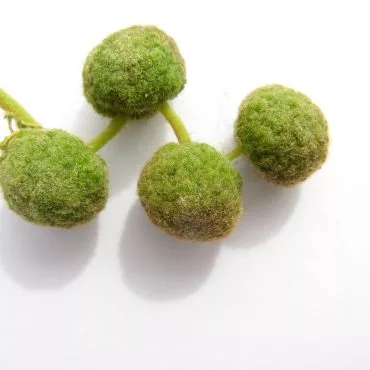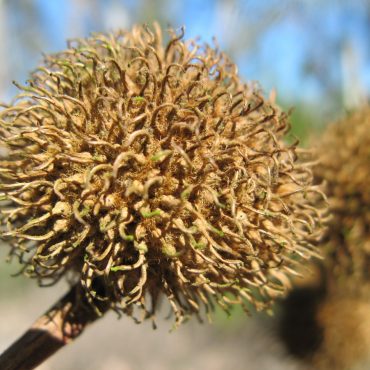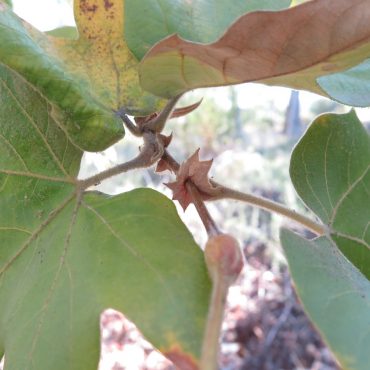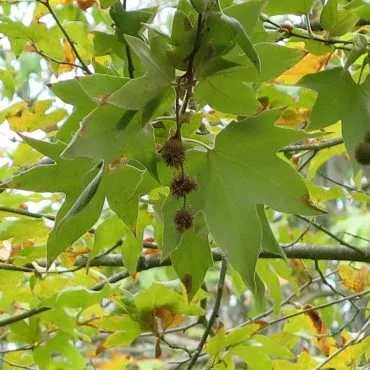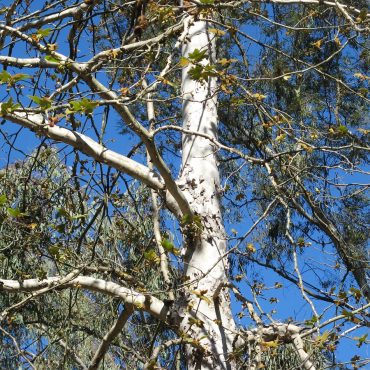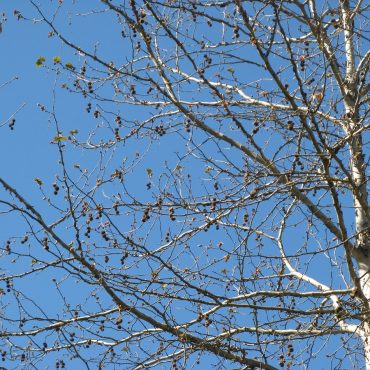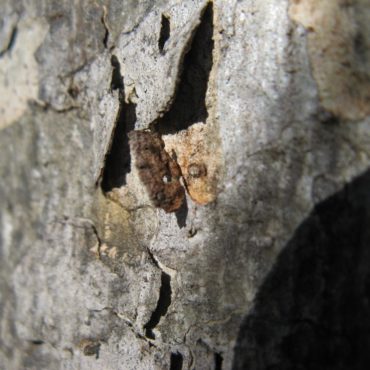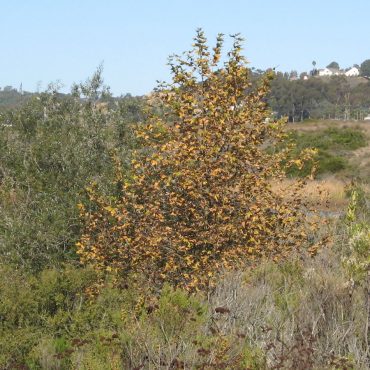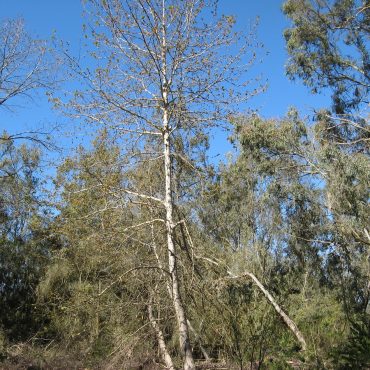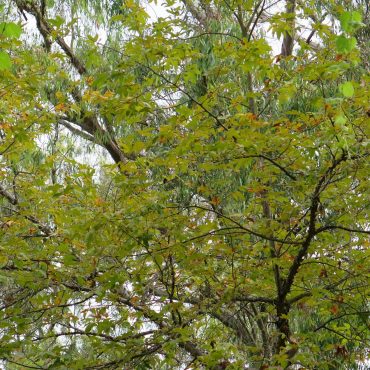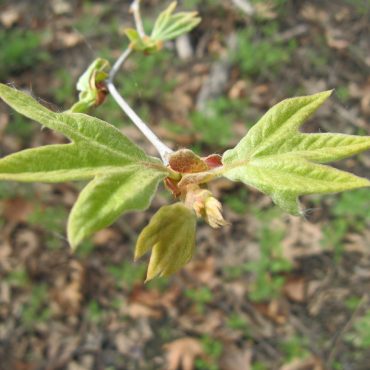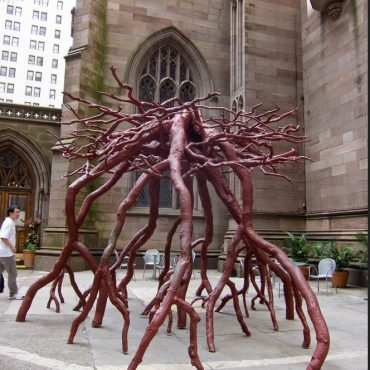Description
4,11,23,59
California sycamore (Platanus racemosa) is a majestic tree, up to 100 feet (32 m) in height and more than five feet (1.5 m) in diameter. A sycamore may have one or several trunks, which may be erect or wildly twisted and bent. The bark is smooth and pale with patches of tan and gray, sometimes tinged with pink and green; the bark has been likened to army camouflage. 317 The bark continually peels away in thin stiff sheets. Near the base of the trunk, the bark is often gray and rough.
The mature green leaves are large, reaching 10 inches (25 cm) long and 12 inches (30 cm) wide. They are palmately cut into three to five lobes, similar to maple leaves; the terminal lobe is 1/3 – 2/3 the leaf length. Young leaves are velvety with a dense covering of hairs that are lost as leaves age, especially on the upper surfaces which become completely smooth. Leaf petioles are 3/4 – 3 inches (2-8 cm) long. At the base of each petiole, there is a jaggedly rounded, leaf-like stipule that encircles the stem and may fall away as the leaf matures. Leaf petioles are unusual in that they wrap around the supporting twig, concealing next year’s axial bud. Like many of our riparian trees, California sycamores are winter deciduous; the leaves often turn yellow and gold before they drop.
The flowers of California sycamore occur in dense, spherical clusters, several of which dangle from a lax peduncle up to three inches (8 cm) long. There may be as many as 100 tiny flowers in one cluster. Male and female flowers occur in different clusters on the same tree. Male clusters are greenish-tan, less than 1/2 inch in diameter; the peduncle is more or less zig-zaged. Individual male flowers are difficult to distinguish. After release of pollen, male clusters drop from the tree. Female clusters are somewhat easier to decipher. Petals are absent but each flower has up to 9 pistils each with a bright red, curved style. Together, these tiny styles give the female cluster a characteristic red, fuzzy look. Flowers are wind pollinated. Sycamore flowers between Feb, and April.1
As the seeds develop, the spherical clusters enlarge to 1 inch or more (2-3 cm). Each seed capsule is one-seeded, dry, tan and elongate with a “beak” (the persistent style) and basal bristle of golden brown basal hairs that aid dispersal by wind. Seed heads persist on the tree through the winter, slowly disintegrating, allowing the seeds to disperse.

